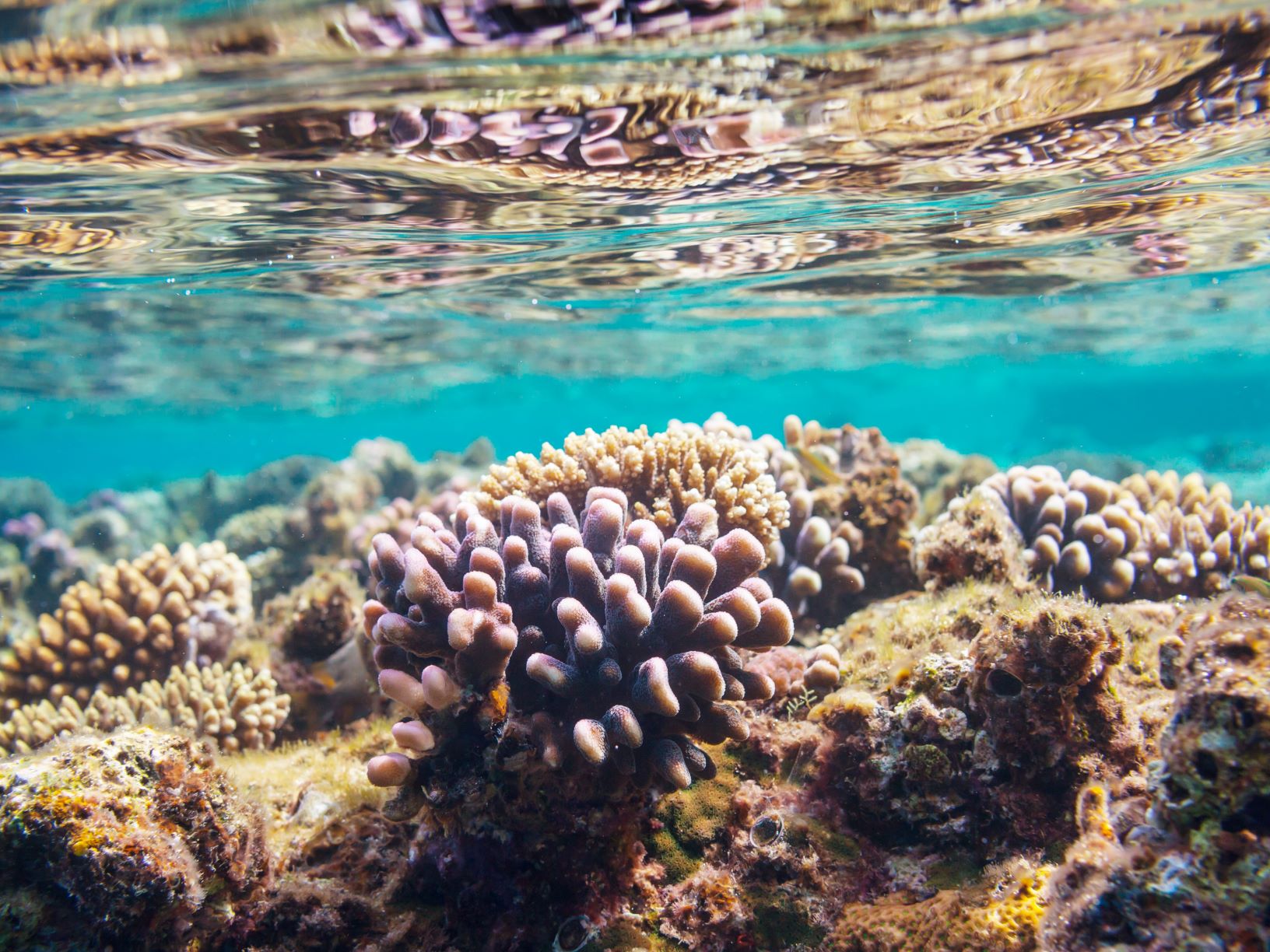The Miami Terrace Reef is a coral reef off the coast of Florida stretching from South Miami to Boca Raton, in the Atlantic Ocean. It lies in depths of 650 to 2,000 feet on top of a geological formation known as the Miami Terrace, a 40-mile long shelf about 15 miles off shore.

The terrace consists of long and well-defined rocky ridges made of limestone that provide a habitat for many types of corals, sponges, and fish. Fish species observed there include wreckfish, barrelfish, and bright red alfonsinos (Beryx decadactylus). Recently observed intertebrate species have included Lophelia pertusa coral, stylasterine hydrocoral (Stylasteridae), bamboo coral (Isididae), and various sponges and octocorals. Motile invertebrates such as crabs and sea urchins have also been observed there, including Asteroporpa sp. ophiuroids, Stylocidaris sp. urchins, Mollusca, Actiniaria, and Decapoda crustaceans (Chaceon fenneri and Galatheidae).
HISTORY
Studies done primarily by the University of Miami (UM) in the 1970s surveyed the Miami Terrace geological formation. Biologists also retrieved samples of reef fauna. John Reed, with Harbor Branch Oceanographic Institution, observed dense aggregations of 50 to 100 wreckfish there in May 2004 during a submersible dive. A UM team with the National Oceanic and Atmospheric Administrations Ocean Exploration program discovered new reef sites there in December 2005 using an autonomous underwater vehicle.
WHY IS CORAL REEF DISAPPEARING?
In 2016, scientists discovered that the Miami reef, which is home to more than 1400 species of flora and fauna, had almost half of them missing. They took the latest satellite images, compared them with precisely drawn 250-year-old British admiralty charts and found them nearly identical. But where the historic charts showed there had been extensive coral reefs close to the shore in the 1760s, the satellite maps revealed just sea grasses and mud. Only those reefs far from the shore were still intact and alive with fish and plants.
So when and why did so much of the world’s third largest reef system just disappear?

In those 250 years, fishing off the Florida Keys intensified, causeways and cities were built, pollution increased and the flow of freshwater, sediments and nutrients from the land all changed. Any of these factors could have led to the stress and decline of the reef, but it probably took a combination to kill off half the corals.
Corals are intolerant both of temperature and salinity change and it just takes a rise of 1C for a few weeks or extreme rainfall for them to begin to die. In the past 20 years, extreme weather linked to El Niño events and climate change has hit the world’s shallow reefs hard.
Abnormally warm water caused the world’s first recorded widespread coral bleaching in 1998. Stretches of the Great Barrier Reef off Australia, and other reefs off Madagascar, Belize and the Maldives, were left white and seemingly dead.
Most recovered because corals survive if conditions return to normal. But since then, widespread bleaching and other events have occurred nearly every year, leaving many of the world’s reefs stressed and vulnerable to disease.
Over 20 years the trend of decline and loss has been inexorable. In 2001, and again in 2005, even warmer seas damaged many more reefs. From 2008-11, extreme summer temperatures led to major flooding and pollution in Australia which badly damaged the Great Barrier Reef.

2013 saw sea temperatures rise again and the longest global coral bleaching event on record began in 2014 with another exceptionally strong El Niño. The 2016 and 2017 mass-bleaching events may now have affected nearly two-thirds of the world’s shallow reefs.
The fear now is that natural resilience is being lost and damaged reefs will not have time to recover before the next extreme event further weakens and then kills them.
But reefs are now beset with more problems than bleaching. Just as off Florida in the 19th century, local pollution, overfishing, loss of oxygen and excess nutrient runoff have increased, and now growing acidification of the oceans is a real danger. Most organisms can withstand some stress but few can cope with this tsunami of trouble.
SOLUTIONS
The solutions are political and technical and must address the entire marine ecosystem. Protected reserves are urgently needed and fishing must be controlled and policed.
But the answers will come mainly on land. For reefs to have any chance of surviving, farmers, cities and mining companies must reduce their pollution and prevent the runoff of sediment and nutrients into the seas.
But above all, climate change must be addressed. If the oceans continue to absorb CO2, the increased acidity will be fatal and coral bleaching will worsen. All that may be left are the deeper reefs.
The UN target to drastically cut emissions and hold temperature rises to 1.5C must be met. If not, then the the world’s rich, diverse and astonishingly beautiful coral reefs may all but disappear within a lifetime. Recklessness on this scale would have unimaginable consequences.
Corals face many threats to their survival in the oceans, most significantly of which is climate change. To counter this threat, coral scientists at the University of Miami Rosenstiel School of Marine and Atmospheric Science are researching methods to help corals adapt to changes in climate. One PhD student, Liv Williamson, talked to the Miami Herald about her doctoral research in this area. Her work involves inoculating juvenile corals with heat tolerant algal symbionts, giving them a better chance of survival in the wild as ocean temperatures continue to rise. Williamson uses cryopreservation to keep coral sperm biologically active, preserving it to use in the future with fresh eggs. The video below has been taken from this site.